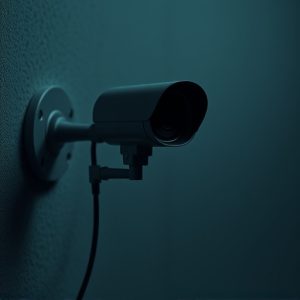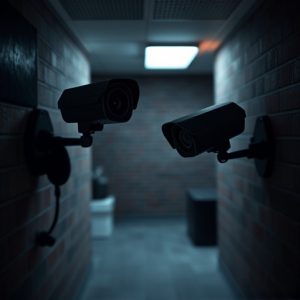Accountability and Transparency: The Impact of Small Spy Cameras with Audio in Law Enforcement
Law enforcement operates under a microscope of public scrutiny, necessitating transparency and acco…….
Law enforcement operates under a microscope of public scrutiny, necessitating transparency and accountability. In this article, we delve into the pivotal role of small spy cameras with audio in shaping modern policing. These devices serve as silent witnesses to interactions between law enforcement officers and civilians, offering an objective record that can clarify discrepancies and uphold justice. We will explore their technical specifications, functionalities, and the legal framework governing their use. Furthermore, we will examine the ethical considerations they bring to the forefront. Through case studies, we’ll witness firsthand how these audio recording tools have influenced policing practices for the better. Join us as we shed light on this critical advancement in law enforcement technology.
Unveiling the Role of Small Spy Cameras with Audio in Law Enforcement Accountability
Small spy cameras with audio capabilities have become an indispensable tool in the realm of law enforcement accountability. These devices, often compact and unobtrusive, are deployed to capture real-time interactions between officers and civilians. They serve as a record that can be invaluable for scrutiny and transparency. The footage they provide has proven critical in both upholding the integrity of law enforcement officers when their actions are justified and in identifying areas where training or policy changes may be necessary. These cameras, equipped with high-definition audio and video recording, create a factual record that can stand up in court, providing legal protections for both officers and citizens. Their presence deters misconduct while ensuring that all parties involved are treated fairly. The consistent use of such technology fosters trust between the community and law enforcement by providing an objective account of events, which is essential for maintaining public confidence in policing practices. Furthermore, these cameras with audio play a pivotal role in post-incident analysis, aiding in the continuous improvement of law enforcement procedures. They offer a clear, audio-visual narrative that can be reviewed to assess compliance with protocols and standards, thereby enhancing the overall effectiveness of law enforcement operations.
Technical Specifications and Functionality of Law Enforcement Audio Recording Devices
In recent years, law enforcement agencies have increasingly turned to advanced audio recording devices to ensure transparency and accountability in their operations. These devices are often compact and unobtrusive, allowing for inconspicuous recording without compromising on sound clarity. Small spy cameras with audio capabilities are equipped with high-fidelity microphones that capture clear and intelligible audio, even in challenging environments. They are designed to withstand a range of conditions, from the harsh sounds of urban streets to the whisper of a conversation in a quiet room. These devices typically feature solid-state memory that provides ample storage for hours of uninterrupted recording, ensuring that critical moments are not missed. Additionally, they often come with remote access capabilities, allowing officers to activate or deactivate the recording function as needed, either manually or through voice commands. This technology enables real-time monitoring and immediate playback, which is crucial for both immediate review during an incident and in post-event analysis for investigative purposes.
The functionality of these audio recording devices extends beyond mere sound capture, with features tailored to the needs of law enforcement. They are engineered to conform with strict legal standards regarding data protection and privacy, ensuring that recordings are secure and admissible in court. The integration of noise-canceling technology helps to filter out background disturbances, focusing on the spoken words for clearer evidence. In addition to capturing audio, many of these devices are also capable of simultaneously recording video, providing a comprehensive view of events as they unfold. This dual capability enhances situational awareness and offers a more complete narrative when reviewing encounters between law enforcement and members of the public. The technical specifications of small spy cameras with audio are meticulously designed to deliver high-quality recordings while remaining user-friendly for officers in the field.
Legal Implications and Ethical Considerations of Audio Recordings by Police Officers
The deployment of small spy cameras with audio by law enforcement agencies has sparked a multifaceted discussion concerning legal implications and ethical considerations. From a legal standpoint, the use of such devices must align with established privacy laws and constitutional amendments. These recordings are subject to stringent regulations that dictate when, where, and how they can be used. The legality hinges on whether individuals have a reasonable expectation of privacy in the situations being recorded, as mandated by case law like Katz v. United States. Ensuring compliance with these legal frameworks is crucial to maintaining public trust and safeguarding civil liberties.
Ethically, the use of small spy cameras with audio raises questions about consent, transparency, and accountability within police-community interactions. The ethical deployment of these devices necessitates clear policies that outline their purpose, boundaries, and management. It is imperative that law enforcement agencies establish protocols to govern the use of such technology, ensuring it serves to promote transparency and protect both officers and civilians. Ethical considerations also extend to the handling, storage, and retrieval of recordings, which must be done with integrity and respect for individual privacy rights. As these technologies evolve, ongoing dialogue between policymakers, law enforcement, and the public is essential to navigate the complex interplay of legal requirements and ethical standards.
Case Studies: How Small Spy Cameras with Audio Have Shaped Modern Policing
The advent of small spy cameras with audio capabilities has significantly transformed the landscape of modern policing, providing a more transparent and accountable means of recording interactions between law enforcement officers and civilians. Case studies from various jurisdictions have demonstrated their efficacy in deterring misconduct, corroborating witness statements, and capturing critical evidence during investigations. In one notable instance, footage from a body-worn camera disproved allegations of officer brutality, clarifying the situation and maintaining public trust. Similarly, audio recordings have been instrumental in capturing precise details of events, which are often pivotal in legal proceedings. These devices have become an indispensable tool for officers, fostering a greater understanding of incidents from multiple perspectives. The integration of these cameras has led to a marked improvement in officer training and policy development, ensuring that best practices are consistently followed. As such, small spy cameras with audio have not only shaped modern policing but have also contributed to the ongoing efforts to uphold the rule of law and protect the rights of individuals. Their role in holding officers accountable and providing clear documentation of events has been paramount, making them a cornerstone of contemporary law enforcement practices.


